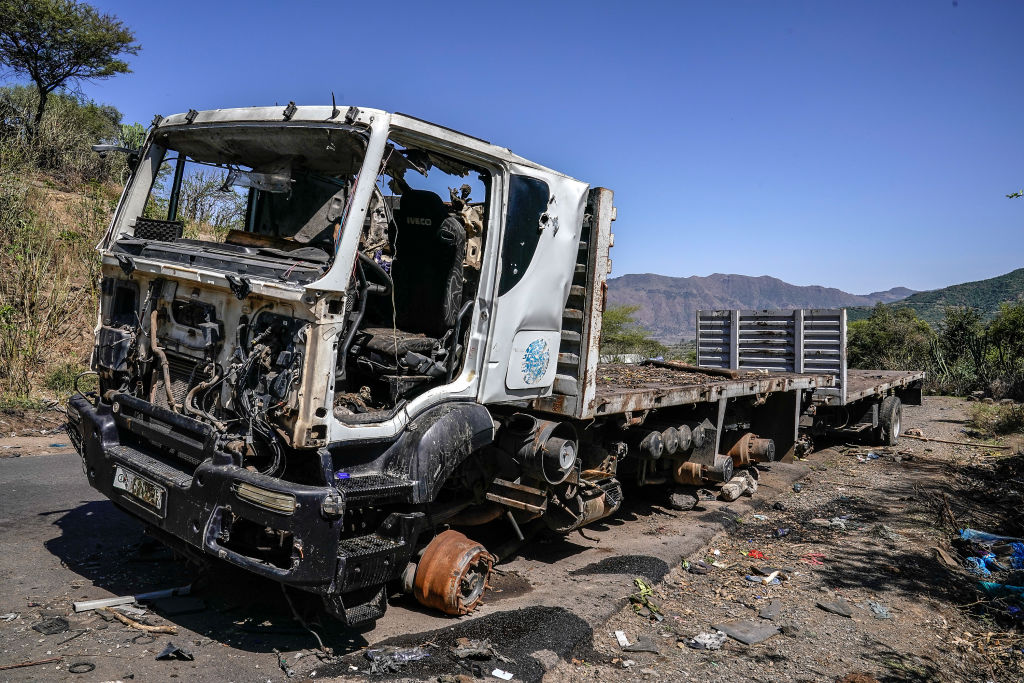Drones have become a major component of military campaigns across Africa in recent years. Although they have led to some key gains by security forces, their expanded use has consequences for civilians.
A new report by Drone Wars UK, a British nongovernmental organization that researches the use of armed drones and other technology, found that nearly 1,000 civilians have been killed by drones in 50 incidents since late 2021.
In Sudan, for example, the Sudanese Armed Forces (SAF) recently claimed to have shot down 100 drones in 100 days during its ongoing battle with the rival Rapid Support Forces (RSF). Both sides routinely use them — the SAF uses Iranian and Turkish-made drones, the RSF uses drones from the United Arab Emirates. Both sides in Sudan’s conflict have used drones in densely populated urban areas, including the capital region of Khartoum. The SAF has attacked markets frequented by RSF fighters. The RSF has used drones to attack the last functioning hospital in North Darfur.
The result of both sides’ drone use has been large numbers of deaths among noncombatants.
A similar story is true in Ethiopia, where the government deployed drones against Tigrayan rebels between 2020 and 2022. Ethiopia continues to use drones against rebels in the Oromia and Amhara regions.
“If we find groups of extremists, we will strike them,” Birhanu Jula, chief field-marshal of the Ethiopian Army, told an Ethiopian state broadcaster in late 2023. Birhanu added that the military does not target civilians with its drones.
Ethiopia’s military has used Turkish-made drones in strikes that hit hospitals, schools and public transport in Tigray, killing hundreds of civilians. Ethiopia has repeatedly used drones to attack civilian groups under the pretense of targeting insurgents, according to Drone Wars UK.
One such attack on a village on Oromia in 2023 killed 86 civilians.
“The case of Ethiopia points to a concerning trend emerging across the continent,” analyst Zecharias Zelalem wrote recently for the European Council on Foreign Relations.
Cheap drones from China, Turkey and the UAE let militaries hit targets while suffering fewer losses on the ground. They’re also available for a fraction of the cost of attack helicopters or fighter jets.
“Together, this can make governments more confident in a military victory and less willing to come to the negotiating table,” Zelalem wrote.
Ethiopian drone attacks alone account for nearly half of the 943 drone-related deaths in Africa recorded by Drone Wars UK. In its recent study, “Death on Delivery,” Drone Wars UK confirmed the use of drones in Burkina Faso, Ethiopia, Mali, Nigeria, Somalia and Sudan. The study focused on medium altitude, long-endurance drones such as Turkey’s Bayraktar TB-2, which has become popular among African militaries.
According to Drone Wars UK, Turkey has sold drones to nine African countries since 2022. The most recent recipients were Kenya and Rwanda in 2024. Other African nations, including Algeria, Egypt, Ethiopia, and Morocco, have received drones from China.
Burkina Faso has used Turkish drones to target civilian markets in its effort to subdue terrorists with al-Qaida affiliated Jama’at Nasr al-Islam wal Muslimin (JNIM). In August 2023, the military attacked the cattle market in Bouro, a village controlled by JNIM. The attack killed 28 civilians.
Mali’s military killed more than a dozen civilians during drone attacks on suspected terrorist positions in the community of Amasrakad, in the eastern Gao region. The government described the attack as a surgical strike, but social media reports later showed the attack hit a civilian health center vehicle and a house where people were taking shelter.
The increasing and indiscriminate use of drones by African militaries is likely to continue to kill civilians without greater attention to how the technology is used, researchers say.
“There is mounting evidence that their [drones’] use has caused significant civilian casualties,” Drone Wars UK researchers wrote. “As drones further evolve and spread there is likely to be further significant civilian harm.”

